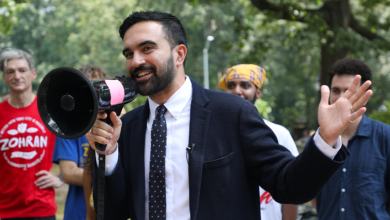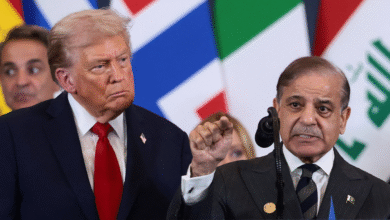Iran’s Strategy for Surviving Snapback Sanctions

On August 28, France, Germany and the United Kingdom activated the UN sanctions re-imposition mechanism, leading to the re-imposition of pre-2015 sanctions against Iran last month. Despite Russian and Chinese efforts to obstruct the process, their draft proposal was rejected by the majority in the UN Security Council. With the restoration of the sanctions mechanism, Iran once again faces tougher restrictions on arms sales, a ban on ballistic missile activity, an asset freeze, and a travel ban. One question quickly emerged for policymakers in Washington, Brussels and Jerusalem: How would Tehran respond?
The first answers may already be clear inside Iran. Days after the reimposition of sanctions took effect, the Guardian Council approved new laws toughening penalties for espionage and cooperation with Israel or “enemy states” and restricting the use of civilian drones. Around the same time, the Islamic Revolutionary Guard Corps’ Fatehin Special Unit conducted high-level training in Tehran, displaying new uniforms and equipment. In a surprise move, the Expediency Discernment Council also conditionally approved Iran’s accession to the Convention for the Suppression of the Financing of Terrorism, after years of resistance. Officially, some council members said compliance would cripple funding for regional allies such as Hezbollah, as part of a broader attempt to counter Western narratives about the country as supporting terrorism.
On August 28, France, Germany and the United Kingdom activated the UN sanctions re-imposition mechanism, leading to the re-imposition of pre-2015 sanctions against Iran last month. Despite Russian and Chinese efforts to obstruct the process, their draft proposal was rejected by the majority in the UN Security Council. With the restoration of the sanctions mechanism, Iran once again faces tougher restrictions on arms sales, a ban on ballistic missile activity, an asset freeze, and a travel ban. One question quickly emerged for policymakers in Washington, Brussels and Jerusalem: How would Tehran respond?
The first answers may already be clear inside Iran. Days after the reimposition of sanctions took effect, the Guardian Council approved new laws toughening penalties for espionage and cooperation with Israel or “enemy states” and restricting the use of civilian drones. Around the same time, the Islamic Revolutionary Guard Corps’ Fatehin Special Unit conducted high-level training in Tehran, displaying new uniforms and equipment. In a surprise move, the Expediency Discernment Council also conditionally approved Iran’s accession to the Convention for the Suppression of the Financing of Terrorism, after years of resistance. Officially, some council members said compliance would cripple funding for regional allies such as Hezbollah, as part of a broader attempt to counter Western narratives about the country as supporting terrorism.
These measures are not routine; They indicate how the Islamic Republic intends to withstand renewed isolation by tightening internal security, demonstrating flexibility abroad, reducing foreign pressure, and demonstrating to adversaries that sanctions will not break the regime. In this way, Iran will choose patience rather than provocation.
Although Tehran tried To delay the re-imposition of sanctions, many Iranian officials have long expected it. Domestically, they downplay its impact and insist that the Iranian economy is able to withstand. Media associated with the Iranian Revolutionary Guard do not view sanctions as an existential threat, but rather as a Western psychological operation aimed at weakening public confidence and fueling political polarization. This is a familiar narrative, portraying sanctions as part of a broader regime change strategy.
However, in the wake of the resolution, Tehran took only limited steps: summoning ambassadors from several European capitals, condemning the move as “illegitimate,” and issuing vague warnings about reducing cooperation with the IAEA. No tangible escalation followed.
Some voices in Tehran have urged more radical action, including withdrawal from the Nuclear Non-Proliferation Treaty. Withdrawing from the NPT would free Iran from inspections and, in theory, allow it to openly pursue nuclear weapons. However, Supreme Leader Ayatollah Ali Khamenei and senior elites have consistently resisted this option, stressing that Iran will remain in the treaty, even if it brings few benefits. They realize that withdrawal would almost certainly lead to Israeli strikes, invite American intervention, and push Saudi Arabia and Turkey to develop their own nuclear programs. According to Tehran’s calculations, such risks would escalate tensions, legitimize foreign military intervention, and ultimately jeopardize the regime’s survival.
Tehran is also keenly aware of its limited capabilities and lack of viable options for escalation. Most of Iran’s proxy groups have been severely weakened since October 7, 2023, and by the collapse of the Assad regime. Only the Houthis in Yemen and a handful of Shiite militias in Iraq retain the ability to harass US and Israeli interests, and even their reach is limited. On paper, Tehran could still resort to cyberattacks, disrupt shipping in the Persian Gulf, or launch limited drone and missile attacks against Israel and US bases. However, all of these carry serious risks. Israel showed its readiness to strike Iran, while Washington pledged to respond forcefully to any attacks on American personnel.
The cost of escalation weighs heavily on Iranian decision-makers. They still remember the lessons of the war with Israel, which inflicted devastating damage on Iran’s nuclear and missile programs and eliminated much of its senior military leadership. For this reason, Tehran will likely downplay the importance of reimposing sanctions while resorting to familiar incremental tactics that increase its influence without crossing the nuclear threshold, such as boosting enrichment, deploying faster centrifuges, and restricting the IAEA’s access. These steps enhance bargaining power while avoiding direct confrontation that might legitimize military intervention.
Sanctions, although painful, are not new. The Islamic Republic has developed ways to coexist with them. Oil sales to China, extensive smuggling networks, and a tightly managed local economy provide enough oxygen to survive. For a regime that has suffered from economic warfare for most of its 45-year existence, sanctions remain a grim constant.
On the political level, Iran is divided. Hardliners call for bold defiance, but realists urge caution. In moments of existential pressure, Khamenei consistently favored restraint. During the Trump administration’s “maximum pressure” campaign, Tehran endured sanctions without withdrawing from the Nuclear Non-Proliferation Treaty or launching a full-scale war. The same logic is likely to prevail now.
The precedent reinforces this path. Tehran has repeatedly chosen to withstand pressure rather than risk escalation that might jeopardize the regime’s survival. In other words, Iran’s leaders are unlikely to seek dramatic escalation and will instead opt for restraint, which they refer to as “strategic patience.” Timing also favors this approach. With Israeli parliamentary elections approaching in a year, Tehran believes that Prime Minister Benjamin Netanyahu may lose power. Outside of Israel, Tehran hopes that a Democratic candidate will win the US presidential elections in 2028, which could change Washington’s position towards Iran.
In this scenario, Iran’s leaders only need to hold out for a maximum of three years, relying on what they call “divine, miraculous and invisible help.” However, for Khamenei, the re-imposition of sanctions is not just a foreign policy crisis, but also a domestic crisis. Despite his rhetoric, he realizes that the most dangerous threats come from within, not from without. These factors include elite fragmentation and widespread unrest, both of which intensify when the regime is under pressure. His strategy is thus two-fold: maintain unity among the ruling elite at the top, while managing social pressures through a combination of controlled concessions and intense repression of the opposition below.
Elite cohesion has always been the regime’s main survival mechanism. Divisions between Revolutionary Guard commanders, clerics, and political elites would embolden opponents and destabilize the regime. This is why Khamenei avoids risky moves, such as withdrawing from the Nuclear Non-Proliferation Treaty, that could fracture the elite. Instead, it emphasizes unity, and places resistance as a revolutionary duty and a matter of national honor. His strategy combines rewards for loyal elites with calculated violence to deter defection. In this way, Khamenei seeks to link his fate with the fate of the regime’s elites, and to ensure that their survival is inseparable from his survival.
Meanwhile, Khamenei will try to keep Iran silent. The sanctions have already pushed up food prices and devalued the currency against the dollar, exacerbating public discontent. To ease social pressure, the regime modified its approach to moral policing, once a central ideological pillar. According to interviews with police officers and active Basij members, they were instructed not to interfere with the implementation of the Islamic dress code. The aim is to avoid provoking public anger and prevent a recurrence of incidents such as the arrest and death of Mahsa Amini, which sparked protests across the country. Anything that might lead to mass unrest should be carefully avoided.
The regime is simultaneously working to intensify repression against parts of society, although such actions may lead to provoking protests or destabilizing the regime. Leaders realize that renewing sanctions will exacerbate economic hardship, leading to higher rates of inflation and unemployment. The memory of the 2019 fuel protests, when security forces killed about 1,500 people in less than a week, still haunts the country. To prevent this from happening again, the government has begun flexing its muscles: organizing street patrols by Basij units and the Iranian Revolutionary Guard, expanding surveillance, criminalizing dissent as “espionage,” and invoking new security laws, recently approved by the Guardian Council, to legitimize harsher crackdowns. The IRGC’s Fateheen maneuvers were not just a tactical exercise; It also served as a warning to Iranians that the country was watching and preparing to use force. In addition, according to a report by an opposition group, Iran’s Supreme National Security Council issued a security directive outlining the government’s plan to respond to potential unrest in the event of increased international sanctions. The directive includes both security measures, such as deployment, surveillance and repression, and propaganda and social resilience strategies, including media efforts and economic messaging.
This dual strategy, characterized by unity at the top and repression at the bottom, aims to buy time. Khamenei expects three difficult years to come, but his bet is simple. If the regime can maintain internal stability and suppress dissent, it can withstand external pressures until the geopolitical context changes.
Snapback mechanism This represents a major diplomatic defeat and deepens Iran’s economic problems. However, Tehran is unlikely to respond with a dramatic escalation, hoping to survive the next three years of the Trump administration. Instead, you will likely resort to the oldest survival strategy: patience.
The Islamic Republic will work to secure its internal sphere, demonstrate military defiance, and wait for the US elections, in the hope that a new, more compromise-oriented president will emerge in the White House.
For Khamenei, now weak but still in power, restraint is not a weakness but a necessity. He prefers to emerge from history as a symbol of unwavering defiance and an anti-American hero, rather than as a defeated and humiliated leader who accepts “unconditional surrender.”
To the outside world, the irony is clear. While the sanctions make Iran appear beleaguered, from Tehran’s perspective, unity, repression, and patience are enough to keep the Islamic Republic afloat during the storm. From this perspective, endurance itself is a form of victory.
Don’t miss more hot News like this! Click here to discover the latest in Politics news!
2025-10-14 04:01:00




